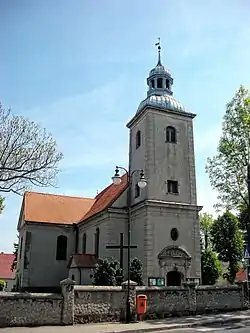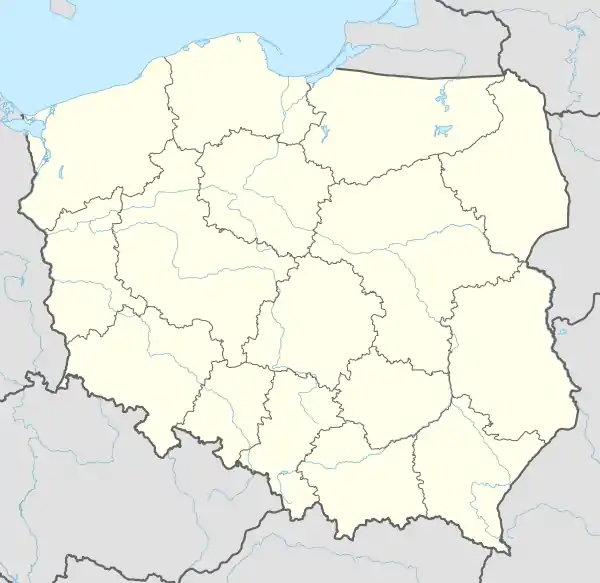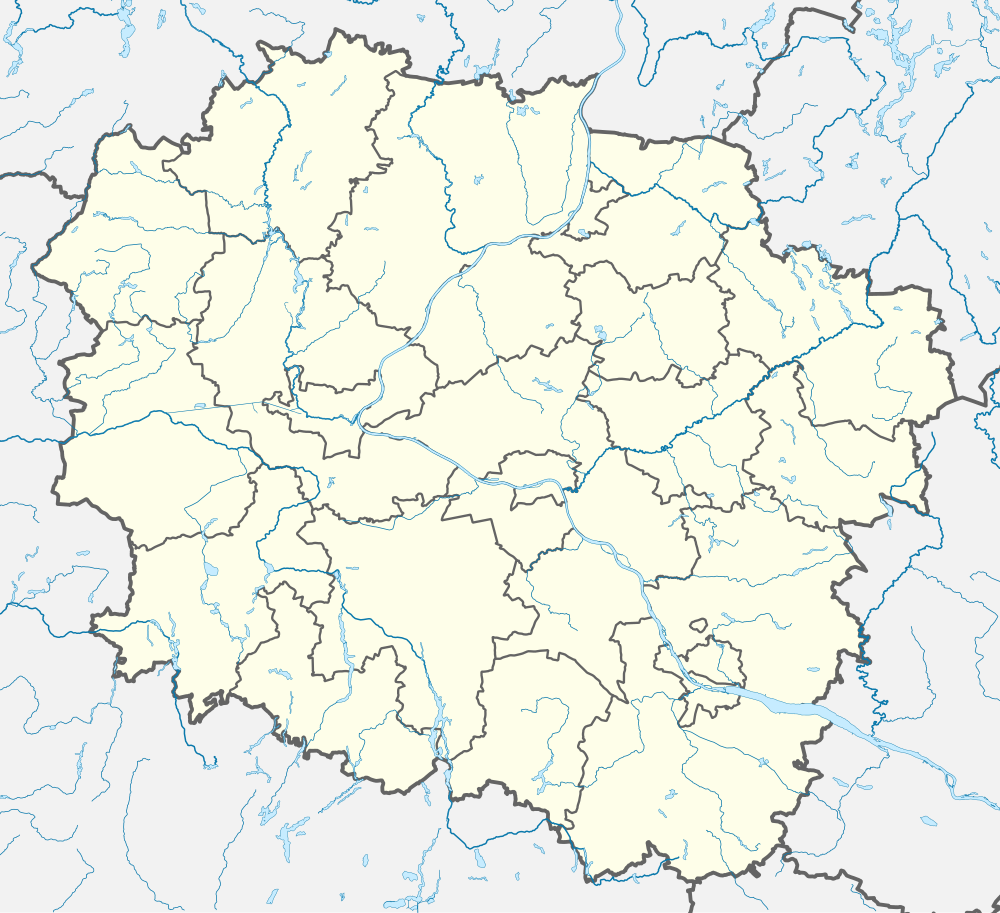Kamień Krajeński
Kamień Krajeński (Polish: [ˈkamjɛj̃ kraˈjɛj̃skʲi]; Kamień Pomorski between 1920–1945; German: Kamin in Westpreußen) is a town in Sępólno County, Kuyavian-Pomeranian Voivodeship, Poland, with 2,276 inhabitants (2004). It is located within the ethnocultural region of Krajna.
Kamień Krajeński | |
|---|---|
 Saints Peter and Paul Church | |
 Flag  Coat of arms | |
 Kamień Krajeński  Kamień Krajeński | |
| Coordinates: 53°31′55″N 17°31′43″E | |
| Country | |
| Voivodeship | Kuyavian-Pomeranian |
| County | Sępólno |
| Gmina | Kamień Krajeński |
| First mentioned | 1107 |
| Town rights | 1359 |
| Area | |
| • Total | 3.65 km2 (1.41 sq mi) |
| Population (2006) | |
| • Total | 2,251 |
| • Density | 620/km2 (1,600/sq mi) |
| Time zone | UTC+1 (CET) |
| • Summer (DST) | UTC+2 (CEST) |
| Postal code | 89-430 |
| Vehicle registration | CSE |
| Website | http://www.kamienkrajenski.pl |
History
The first historical record of Kamień comes from 1107. Its name means "stone" in Polish. It was a seat of a castellany during the reign of Bolesław III Wrymouth of Poland. In the thirteenth century it belonged to the Archbishop of Gniezno. It was briefly occupied by the Teutonic Knights in 1339 before reverting to Poland. In 1359 it received municipal rights from Archbishop Jarosław. Shortly after a defensive castle was built which survived until 1721. Administratively it was located in the Nakło County in the Kalisz Voivodeship in the Greater Poland Province of the Polish Crown.
After the First Partition of Poland in 1772, Kamień was annexed by the Kingdom of Prussia, and under the Germanized name Kamin it formed part of the Flatow district (Landkreis Flatow) until 1920, when the eastern part of the district with 30,516 inhabitants (including 8,600 Poles)[1] and the towns of Kamień, Więcbork and Sępólno Krajeńskie were reintegrated with the established Polish Republic after the Treaty of Versailles.[1] The town became part of Sępólno County. After the German Invasion of Poland Sępólno County was annexed by Nazi Germany in 1939, and it became part of Landkreis Zempelburg. During the German occupation, Poles were subject to persecutions, mass arrests, expulsions and massacres. Numerous Poles were imprisoned in a concentration camp in Radzim and in a prison established by the Selbstschutz in Sępólno Krajeńskie, and later murdered there or deported to other Nazi concentration camps.[2] Mass arrests of Poles were carried out from September 1939.[2] In 1945 the town was restored to Poland.
References
- Wolfgang Bahr: Kurze Geschichte des Flatower Landes. In: Heimatbuch für den Kreis Flatow – Grenzmark Posen-Westpreußen – Provinz Pommern. Heimatkreisausschuss für den Kreis Flatow (ed.), printed by Karl Neef oHG (Wittingen), Gifhorn 1971, pp. 37-42 (in German).
- Wardzyńska, Maria (2009). Był rok 1939. Operacja niemieckiej policji bezpieczeństwa w Polsce. Intelligenzaktion (in Polish). Warszawa: IPN. p. 168.
- F. W. F. Schmitt: Topographie des Flatower Kreises. In: Preußische Provinzialblätter, Andere Folge, Vol. VII, Königsberg 1855, p. 116 (in German).
- Meyers Konversations-Lexikon. 6. Auflage, 10. Band, Leipzig and Vienna 1907 (in German).
- Der Große Brockhaus. 15. Auflage, 9. Band, Leipzig 1931, p. 622 (in German).
| Wikimedia Commons has media related to Kamień Krajeński. |